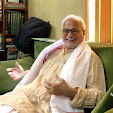Self-appraisal at the end of 2011 term of office
The term of office of the members of the Working Committee and Auroville Council ends on June 22nd. Both groups have published an appraisal of their functioning over the past two years. Here we share excerpts from these self-appraisals.
Since the beginning of our tenure, the team has worked reasonably well. It was possible to find mutual agreement between us and work through consensus, however long it may have taken at times to arrive at it. None of us had any particular agenda in mind and that is probably an important condition for a consensus.
Most of the members of the present Council were quite new to this type of task and it took us a long time to understand the complexity of the job and the full nature of the problems and how to address them effectively.
We felt as if we were thrown inat the deep end, with no continuity with theprevious group except for the saving graceof our secretary Sathya's presence as Council secretary.
Therefore, keeping in mind that it takes members quite some time before they can be pro-active within the group and contribute significantly, we think it would be advisable to renew some of the members every year, in order to allow new members time to get acquainted with the work, or to allow some members of the previous group to stay on with the new group for a period of a few months to ensure continuity in the work.
Having a totally new group, new to its job every two years, is not a good working formula. The members spend half their time reinventing the wheel.
The mandate of the Council is very wide and diverse, but more than 90% of our time was taken up by conflict resolution. The most essential part of our mandate, which concernsfinding living ways to manifest the ideal of Auroville, is thus continually put on hold as our time is consumed by conflict resolutions.
To avoid this overburdening of the Council, we propose that a Conflict Resolution cell be created under the Council with permanent members having the required profile to assist the Council in this aspect of the work.
Most of these conflicts are irrelevant to Auroville's aims and ideals. Most of the people involved just want recognition that they are right and that the other party is wrong. We have therefore come up with a set of requirements for bringing issues to us that puts the emphasis on the individuals involved working towards a true solution.
We are convinced of the impossibility of arriving at a true solution if the parties in a conflict do not want to make the necessary efforts to arrive at a mutual understanding. It is a progress that we cannot do for them and any decision taken then is a decision by default, not the truest one. It is far below what The Mother expected of us, when she mentioned several times the need to arrive at a point where what is antagonistic becomes complementary. As long as this effort is not made, we are not in the context of a society of unending education and constant progress.
Most of the Council members already have a full-time job and therefore cannot offer the needed time to follow-up on all of the issues which are generally brought to us when all else has failed and the situation has reached crisis point. This is hardly a way to function serenely. Help is needed to assist the Council members in their task by preparing and following up on the issues, as well in keeping a channel of communication open with the community and with the other working groups.
One of the areas where attention is needed is the communication/information aspect. The Residents Assembly Service needs to emerge as the group responsible for seeing to it that a living communication between the community at large and the working groups is maintained, perhaps through a certain minimum number of general meetings a year. A culture of consultation on key topics through forums with concerned community members who are determined to seek a comprehensive way forward and to stay with the process, also needs to be nurtured.
The Council mandate is obsolete in its wording. It is too vast and vague. It deserves to be more accurately formulated. There is a confusion of functions because the Council is asked to act as an executive body implementing decisions, as a judiciary in conflict resolution and as a supreme court of appeal in deciding conflicts between individuals or between individuals and working groups. We need to separate these functions because they have to be independent of each other and because they require people with different profiles and abilities.
To summarise, what is needed is to take organisational steps to allow more availability of the Council, more facilitated transition between two Councils, more coordination with other groups and more communication with the Community.
